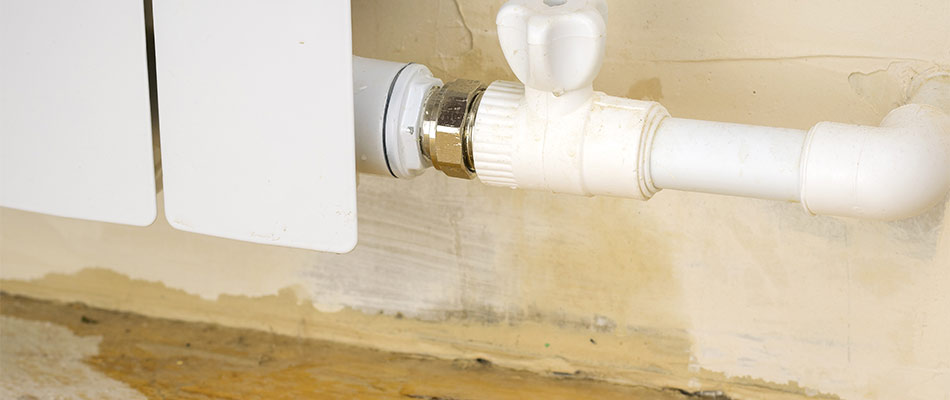They are making a number of good points about Hacks to detect leaks overall in this post down the page.

Early discovery of dripping water lines can mitigate a possible catastrophe. Some little water leaks might not be visible.
1. Take A Look At the Water Meter
Every residence has a water meter. Inspecting it is a proven way that helps you find leakages. For starters, shut off all the water sources. Make sure no one will flush, utilize the faucet, shower, run the cleaning equipment or dishwasher. From there, go to the meter and also watch if it will certainly transform. Given that no person is utilizing it, there should be no activities. That shows a fast-moving leak if it relocates. If you spot no adjustments, wait a hr or two and check back once again. This indicates you might have a slow-moving leakage that can also be below ground.
2. Examine Water Intake
Examine your water expenses and track your water consumption. As the one paying it, you need to observe if there are any type of inconsistencies. If you spot sudden changes, regardless of your usage being the same, it suggests that you have leaks in your plumbing system. Remember, your water costs ought to drop under the exact same array on a monthly basis. A sudden spike in your costs indicates a fast-moving leakage.
At the same time, a steady boost on a monthly basis, despite having the same practices, reveals you have a slow-moving leakage that's additionally gradually escalating. Call a plumber to completely check your home, particularly if you feel a cozy location on your flooring with piping beneath.
3. Do a Food Coloring Test
When it comes to water intake, 30% comes from toilets. If the color in some way infiltrates your bowl during that time without flushing, there's a leakage in between the tank as well as dish.
4. Asses Outside Lines
Don't neglect to inspect your outdoor water lines also. Ought to water seep out of the link, you have a loose rubber gasket. One little leak can throw away heaps of water as well as increase your water expense.
5. Analyze the circumstance and also examine
Home owners ought to make it a behavior to check under the sink counters as well as also inside cabinets for any type of bad odor or mold and mildew development. These two red flags show a leakage so timely interest is needed. Doing regular evaluations, even bi-annually, can conserve you from a major trouble.
If you recognize your house is currently old, keep a careful eye on your heating units, pipes, pipes etc. Check for stainings and also damaging as a lot of pipes and appliances have a life span. They will also normally weaken due to damage. Don't wait for it to intensify if you suspect dripping water lines in your plumbing system. Call a specialist plumber today so you don't end up with a terrible mess in your home.
Early discovery of dripping water lines can mitigate a potential disaster. Some tiny water leaks may not be visible. Checking it is a surefire way that aids you uncover leakages. One small leakage can squander lots of water as well as spike your water bill.
If you believe dripping water lines in your plumbing system, don't wait for it to escalate.
How to Know If Your Home Has a Hidden Leak
Water Meter Reveals Inexplicable Water Usage
If you’d like to test whether or not there’s a leak somewhere in your home, you can do this using your water meter. Here is how to conduct the test:
Don’t use any water in your home for at least 30 minutes; this also means not turning on faucets or water-using appliances.
Go outside, and check your water meter for activity.
If your water meter shows that there was activity, even though no one was using any water, this proves that there is a leak in your home.Visible Mold or Mildew Growth
Leaks behind walls create moist, dark environments that allow mold and mildew to grow and thrive. Eventually, you might see mold growth forming on the wall closest to a hidden leak.
If mold is growing in an area that receives a high amount of moisture, such as a bathroom, it may simply be an indication that better ventilation is needed. However, if you see mold growth on a wall or the ceiling in an area where you would not expect, you probably have a hidden leak.
Musty, Mildew Odor
Sometimes you might not be able to see the mold or mildew that is growing as a result of a leak. However, the smell can give the problem away just as easily. If you catch a whiff of something musty, there’s a good chance that old water is collecting somewhere in your home that you can’t see.
Stained/Warped Walls, Ceilings, or Floors
When your home soaks up water, a variety of red flags can become visible, including ceiling stains, bubbling drywall, warped walls, and sagging floors. While these issues can be caused by excess humidity, they can also be signs that a pipe or plumbing connection has started leaking behind your walls.
Inexplicably High Water Bill
After a while, you get a general sense for what your water bill should be. If you own a pool or sprinkler system, your bill will tend to be higher during summer. However, if you receive a water bill that seems especially high, and you can’t figure out what caused it, then you may have a hidden leak somewhere that’s increasing your bill.
https://www.plumbingjoint.com/blog/2019/july/how-to-know-if-your-home-has-a-hidden-leak/

I ran across that write up on Leaking water lines while doing a lookup on the internet. Do you know about anybody else who is interested in the niche? Do not hesitate to share it. Many thanks for your time spent reading it.